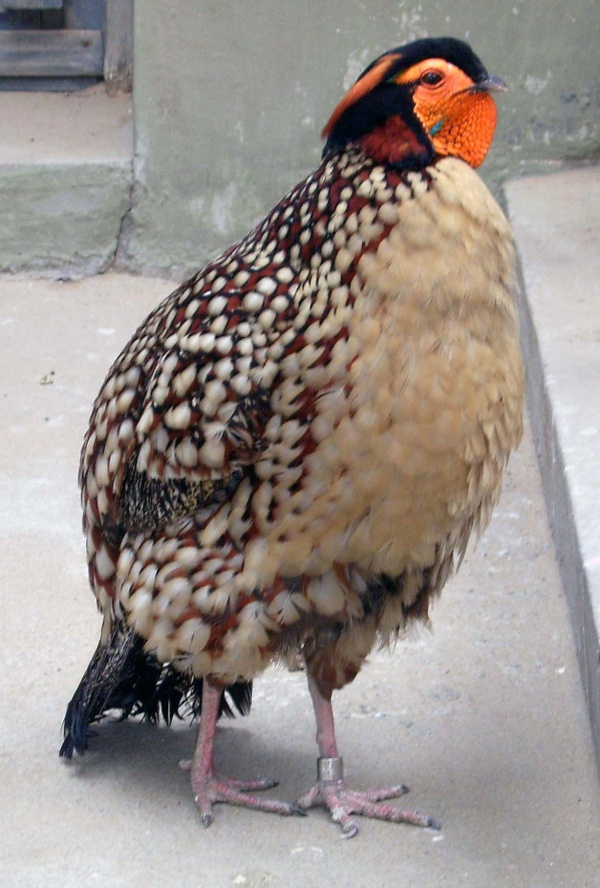Facts About Cabot's tragopan
Cabot's tragopan, also known as the Chinese tragopan or yellow-bellied tragopan, is a species of pheasant native to southeast China. Named in honor of ornithologist Samuel Cabot III, this striking bird exists in two subspecies. One subspecies inhabits several Chinese provinces, while the other is found in northeastern Guangxi and southern Hunan.
The males are particularly striking, measuring about 60 cm in length and weighing approximately 1.4 kg. They are adorned with bold black and reddish-orange feathers, complemented by blue and orange wattles and distinctive blue "horns" above their eyes. The females, slightly smaller than the males, exhibit more subdued coloring.
Cabot's tragopans reside in subtropical evergreen and mixed forests in mountainous regions, typically at altitudes ranging from 600 to 1,800 meters. They primarily forage on the ground, consuming a variety of plant materials and occasionally small invertebrates.
The breeding season occurs in the spring, with females laying clutches of two to six eggs and assuming sole responsibility for incubation. Sadly, the species is classified as vulnerable by the IUCN, with fewer than ten thousand individuals remaining. The primary threat to their population is habitat loss due to deforestation for agriculture and plantations.
Conservation efforts are underway and include creating artificial nesting platforms, protecting segments of their habitat, and addressing illegal hunting. Zoo Praha plays a notable role in these efforts, serving as the studbook holder for Cabot's tragopan.

 North Korea
North Korea